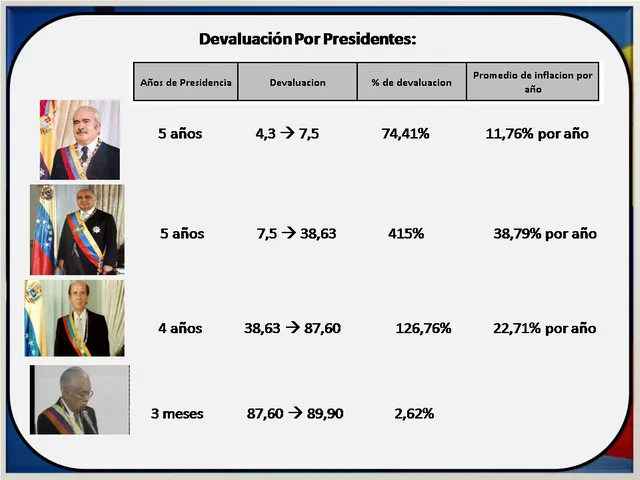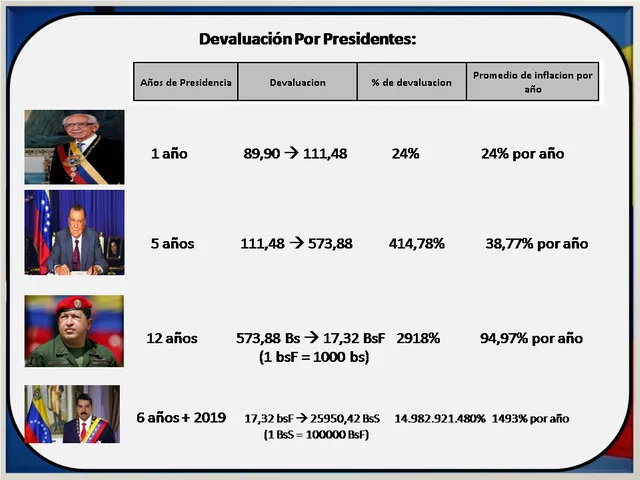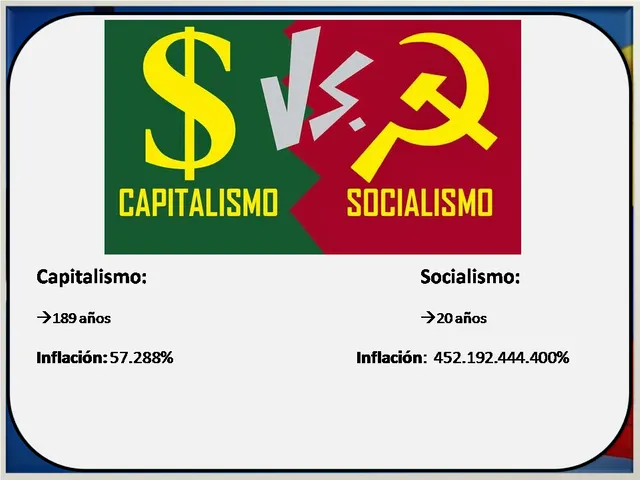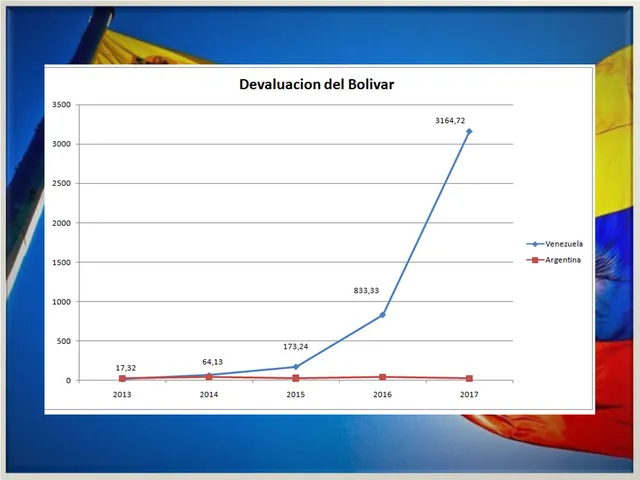Note: Inflation will be measured based on the monetary devaluation that the Bolivar has suffered (in reference to the dollar) and will be made from the independence of Venezuela until August 30, 2019.

Venezuela is a country that suffers a lot and from which little or nothing is done, a devastated country forcing to undertake the 2nd largest migration of the planet after Syria, and the worst ... Venezuela is not at war with any country or devastated by conditions Natural, his ERROR was to be trapped by an ideology based on lying to his population, and that is when you can't be worse, Venezuela shows that YES is possible
One of the examples is the annual inflation aided by the devaluation of the currency and it is that in 2018 it was approximately 1,300,000%, it is difficult to know but it can be approximated by some entities and banks such as the IMF and the world bank. The government took 3 years to unveil information of an economic nature, in this case, the economic indicators / indicators, all with the purpose of not disclosing the failures of SOCIALISM. What happened? How could he get to these conditions, it was previously unthinkable that we could get to how we are today.
Everything begins in its independence in 1811 where the Venezuelan currency is created and had a currency parity with the dollar 1: 1, until the government of Juan Vicente Gomez devalued it until 3.19 Bs / $ (1940) and then to 3.35 Bs / $ (year 1941), and remains with the same value until in 1964 it is devalued to 4.5 Bs / $. in 1960, a foreign exchange control is placed and it has 2 values: 4.7 bs / $ for trips and 3.35 Bs / $ for essential imports. In 1961 exchange rates are unified and is 4.7 Bs / $. in 1964 the exchange control is eliminated and falls to 4.3 Bs / $
In the following images you can see the changes in the value of the Venezuelan currency with the different presidents in their periods until 2019.


In the following image we can see a comparison of capitalism and socialism in Venezuela based on the inflation generated by both types of ideologies.

When Chavez wins the presidency, the currency begins to increase to 1383 Bs / $ and in 2003 an exchange control is established that prohibits people from making transactions on a regular basis and the state maintains absolute control preventing people from buying dollars. , and that is when the black market begins and therefore the value of the currency is established based on supply and demand and trust. for 2008 a monetary reconversion is made and 3 zeros are eliminated and it is called Bolívar Fuerte, leaving its value at 2.15 BsF / $, in 2010 it goes to 4.3 BsF / $ and in 2013 at 6.3 BsF / $ (DolarToday showed the real value). at this point the socialist regime is accentuated to create maximum destruction through theft and waste of international reserves and that is when the Venezuelan crisis is accentuated and the government places a fictitious price on the currency with the idea of not giving dollars to entrepreneurs through endless procedures that could exceed 1 year.
Before the galloping inflation the government is forced to eliminate five (05) zeros to the currency and happens to be called Bolivar Sovereign. The value of the Venezuelan currency on each January 1 of each year as of 2013. (BsF) is as follows:
2013 -> 17,32
2014 -> 64.13
2015 -> 173.24
2016 -> 833.33
2017 -> 3164.72
2018 -> 111,413.23
2019 -> 73,029,000
2019 (August 30) to 2,595,042,000
In the following images you can see through a graph the increase in the value of the currency (devaluation / inflation) the Bolivar during the last years and a small comparison with Argentina, it is necessary to separate the graphics because if they were joined in one it would not be appreciated The steep rise.



With the Salary it is not encouraging, with the Venezuelan worker being the lowest on the entire planet and continuing to fall. In the following image you can see the (minimum) Salary of a Venezuelan per year:
